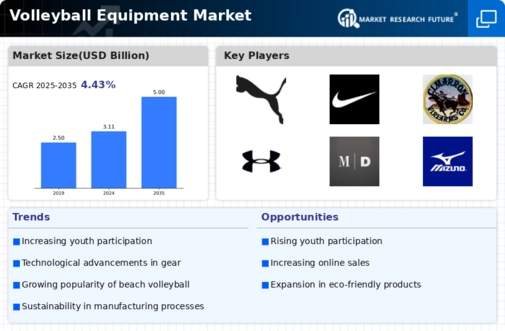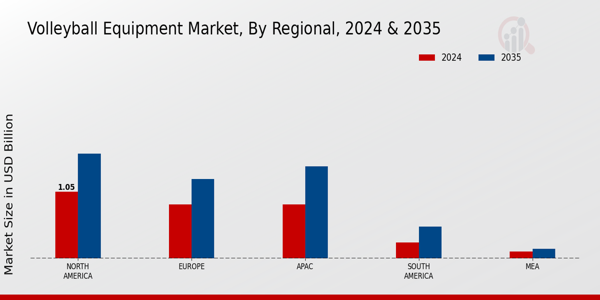The Global Volleyball Equipment Market has seen significant evolution and competitiveness over the past few years, driven by the increasing popularity of the sport across various demographics. This market encompasses a wide range of products, including volleyballs, nets, footwear, knee pads, and other accessories tailored for both recreational and professional players. The competitive landscape is characterized by numerous key players vying for market share, each offering unique value propositions and innovations. Companies are continuously improving their product quality and adopting advanced materials to enhance player performance and safety while promoting sportsmanship and physical fitness.
The rise in investments in sports infrastructure and the growing influence of social media in promoting sports events have further fueled the demand for volleyball-related products. Kawasaki holds a prominent position within the Global Volleyball Equipment Market, leveraging its strong brand reputation and commitment to quality. Known for its focus on innovation, Kawasaki has developed a comprehensive range of volleyball equipment that caters to the needs of both amateur and professional players. The brand emphasizes the use of cutting-edge materials and technologies in its products, which enhances the performance and durability of its volleyball gear.
This commitment to superior quality has not only helped Kawasaki establish a loyal customer base but also enabled it to gain traction in various international markets. Moreover, the company's strategic partnerships with sports organizations and sponsorship of volleyball events have enhanced its visibility and presented opportunities for growth in emerging markets. Kawasaki's ability to adapt to changing consumer trends and its dedication to continuous improvement solidify its competitive edge within the industry.Puma, while more commonly associated with general athletic wear and accessories, has also made a notable impact in the Global Volleyball Equipment Market.
The brand is recognized for its stylish and functional designs, which appeal to the youth demographic and active lifestyle enthusiasts. Puma offers a diverse selection of volleyball footwear and apparel, enhancing the playing experience through both aesthetics and functionality. Their products are often characterized by innovative features such as enhanced cushioning and breathability, catering to the specific requirements of volleyball players. Additionally, Puma's strategic marketing campaigns and collaborations with influential athletes have strengthened its presence in the market.
The company's global outreach and comprehensive distribution network facilitate accessibility to its products, allowing them to maintain a competitive foothold alongside other specialized volleyball equipment manufacturers. Puma's blend of style, comfort, and performance positions it as a favorable choice for volleyball enthusiasts looking for quality and trend-setting sportswear.












